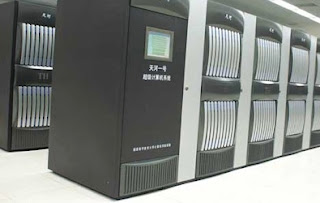| |
| Affordable But Capable Ubuntu-powered Laptop Computers Posted: 29 Jul 2011 05:30 AM PDT  Ubuntu, slowly but steadily, is gaining prominence in the Microsoft-dominated world of desktop, laptop and netbook computers. While this gradual rise may not be enough for your next-door Joe to switch to Ubuntu, it does however give the devoted Linux user some decent choice while buying his or her new laptop. Ubuntu, slowly but steadily, is gaining prominence in the Microsoft-dominated world of desktop, laptop and netbook computers. While this gradual rise may not be enough for your next-door Joe to switch to Ubuntu, it does however give the devoted Linux user some decent choice while buying his or her new laptop. Recently, laptops and netbooks have started showing up in the market and are pre-loaded with Ubuntu. Though this may not be any different than buying a Windows-based laptop and replacing the OS with Ubuntu, it does offer a few advantages. Buying an Ubuntu-powered PC allows you to overcome the initial hiccups many new Linux users face, which are mainly related to hardware incompatibilities. So, if you are planning to purchase an affordable but capable Ubuntu-powered laptop, here are some nice ones you can add to your wish list: This is one of the most popular computer companies when it comes to making Ubuntu-powered machines. For about a year or so, they have been designing computers especially for Ubuntu and to be honest, they are actually quite good at it. System 76 makes sure that you have a completely functional Ubuntu desktop from the moment you first boot the device. They sell netbooks, laptops, servers and desktops that are reasonably priced with professional tech support included. Being a Linux-centric company, you are offered a lot of choices while buying a System 76 computer. For example, if you are planning on buying a 15 inch laptop, you get to choose the amount of processing power, memory and disk space you want in there. You also get to choose to include a laptop bag as well as add extra warranty, battery and AC car adapter. By default, you get a one year limited warranty with full technical support. Every System 76 laptop, desktop or netbook ships with the latest version of Ubuntu with Flash pre-installed. And mind you, every piece of hardware in that machine works flawlessly with Ubuntu. What's more, they are the folks that manufacture the world's most powerful Ubuntu device, which is Serval Professional. System 76 currently ships in UK, US and Canada. Shipping is done usually within 10 days from order. Prices might be slightly over your budget but don't forget that you get full technical support with it.  Kogan is an Australian company that has been manufacturing consumer electronics for quite a while. In the FOSS community, they are well known for making low-priced Linux-based netbooks and laptops. We've already reviewed their Chromium-based laptop before and we've been quite disappointed by it. However, the latest offering from the Aussie consumer electronics giant manages to impress us quite a lot. The 12-inch laptop comes with 1GB DDR2 RAM (expandable to 4 GB), 250 GB Hard Disk and a 1.3GHz Intel Pentium Processor. The specifications are nowhere near the high-end computers that are in the market today. But, being a budget laptop, we cannot complain. Priced at just 350 USD, this little device comes with the latest version of Ubuntu pre-installed. Even though the 3.5-hour battery life leaves a lot to be desired, a fully functional low-cost laptop might appeal to the Tuxians looking for a decent secondary device.  This is a laptop manufactured by a company called Genesi and is targeted towards developers and advanced users. The sleek 10.1-inch laptop comes with an 800Mhz A8 ARM Cortex processor, 16GB NAND Flash, Wi-Fi and Bluetooth. It comes loaded with Ubuntu 10.10 'Maverick Meerkat' and weighs about 2 lbs. Like Kogan Agora Laptop, Efika MX is not a full-fledged performance machine. However, if you're looking for something really affordable then this is your best bet. Efika costs only 200 USD and can be ordered from the Genesi website.  Nufront ARM-Powered Laptops These are two new devices, which were recently showcased at CES 2011. Manufactured by a Chinese company called Nufront, these laptop computers run the latest version of Ubuntu. One is 10-inch and the other is a 14-inch laptop, both sporting a dual-core ARM Cortex-A9 processor. The 10-inch version comes with full-size VGA, two USB ports, HDMI output, and an SD card. The 14-inch one comes with 3 USB ports, built-in Ethernet, HDMI and hi-res screen. Both the devices are expected to land in the market soon. On the pricing front, expect the devices to be cheaper than the ones with Windows. So, if you are planning to get a good secondary device, you might want to wait for these. Apart from running Ubuntu, Nufront also plans to launch devices running Android operating systems. Here's a video demonstrating the main Nufront products, which were showcased at CES 2011: Written by: Abhishek, a regular TechSource contributor and a long-time FOSS advocate. |
| You are subscribed to email updates from TechSource To stop receiving these emails, you may unsubscribe now. | Email delivery powered by Google |
| Google Inc., 20 West Kinzie, Chicago IL USA 60610 | |






















